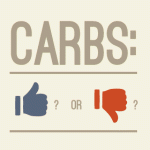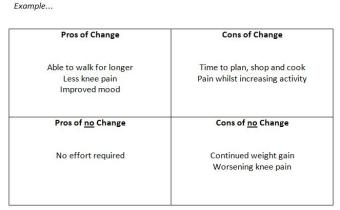I can’t count the number of times people have told me that carbs are “the devil”. It’s a common dietary myth which drives me up the wall.
Carbohydrates are the main source of energy for the body – vital for brain and muscle function. Picking the right carbohydrates can leave you feeling satisfied for hours and topped up with all the right vitamins and minerals. Picking the wrong carbohydrates can leave you with a “sugar crash”, feeling hungry within 30 minutes and with a waistline that makes you want to wear black from head to toe.
So how do we know which carbohydrates to choose? There are two main types of carbohydrates:
Simple: these are the more refined carbohydrates which get released quickly into the blood stream. They cause rapid spikes in blood sugar levels, leaving you hungry and craving unhealthy food. Simple carbohydrates are often described as “empty calories” as they contain little/no vitamins, minerals or fibre. These include: table sugar and the sugars used in baked products e.g. cakes, biscuits and chocolate.
Complex: these are the carbohydrates which contain starch/fibre, theyinclude: potato, pasta, bread, rice, breakfast cereals, oats and noodles. These carbohydrates are broken down into sugar slower than the simple carbohydrates, keeping you fuller for longer and preventing big spikes in blood sugar levels.
Why the bad press?
So if carbohydrates are essential, contain lots of vitamins and minerals and keep you feeling satisfied why do they get such a bad press? Why do people claim that they can’t lose weight unless they are on a low carb diet? Why are two of the most popular fad diets; the “Atkins diet” and the “Dukan diet” based on low carb principles? Surely all these people can’t be wrong…
I believe that carbohydrates are misunderstood. They are often over-eaten; so when people go on a ‘low carb diet’ they are simply bringing their carb consumption back to the recommended range. Carbohydrates have fewer calories that protein and fat. However when you add peanut butter to bread, cheese sauce to pasta or fry rice in oil, you add calories making the carbs appear fattening.
How to be friends with carbohydrates:
1) Try swapping to wholegrain versions of bread and pasta. These are low “GI” (Glycaemic Index) which means they release their energy slowly, keeping you fuller for longer.
2) Avoid adding creamy/cheesy sauces, oil or butter to your carbohydrates.
3) Use packets to help guide your portion sizes. Put the pan on the scales and pour in the correct amount of carbohydrate (this often looks like a small amount until it has been cooked – so trust the scales!). Healthy portion sizes are as follows:
- 75g of raw pasta/rice/noodles
- 2 slices of bread
- 3-4 egg sized potatoes or 1 baking potato
- 50g oats
- 30-40g of breakfast cereal
4) Try to only have 1 portion of carbohydrate per meal e.g. avoid having bread with pasta or naan with rice – go 50:50 if you want to try both but don’t have a whole portion of each.
5) Avoid snacking on the simple sugar foods, these often leave you with cravings. Instead try snacking on nuts, fruit or vegetable sticks for a healthier, more filling option with fewer calories.
6) Avoid drinks which contain simple sugars e.g. fizzy drinks, mixers, squashes and fruit juices. Opt for low-calorie/no-added-sugar varieties.
Use these simple swaps to reduce your cravings and snacking, bring your weight in check and improve your whole dietary balance.




